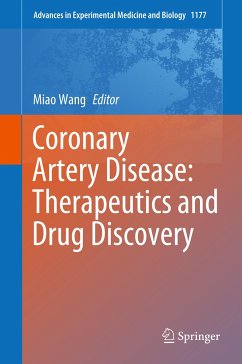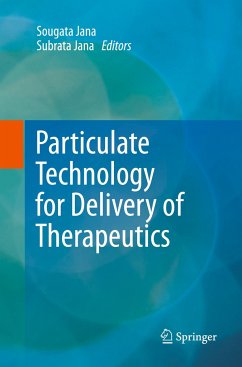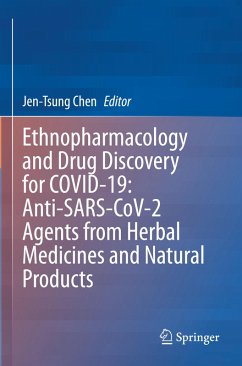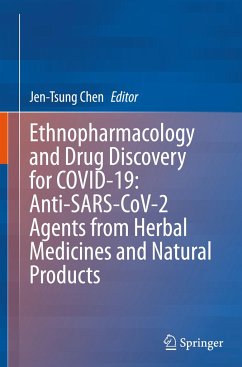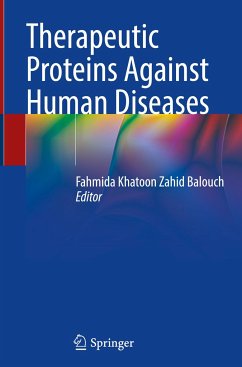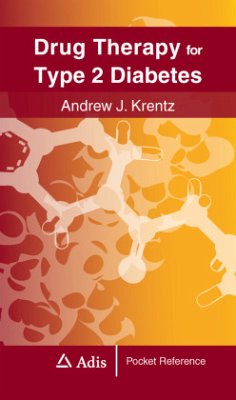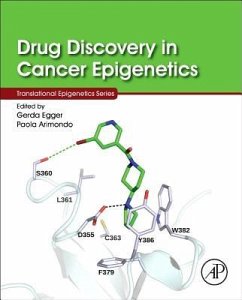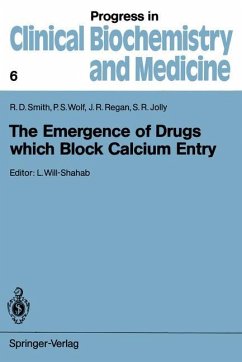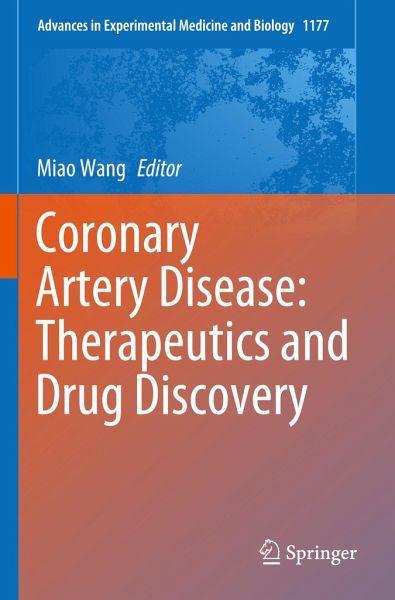
Coronary Artery Disease: Therapeutics and Drug Discovery
Versandkostenfrei!
Versandfertig in 6-10 Tagen
76,99 €
inkl. MwSt.

PAYBACK Punkte
38 °P sammeln!
This book provides an overview of the etiology of coronary artery disease and focuses on the main therapies and drug interventions currently available. It highlights drug pharmacology and therapeutic challenges, with a special emphasis on the underlying principles of available therapeutics and the on-going development of drugs for coronary artery disease.The book is divided into eight chapters, the first of which describes the classical mechanism of coronary artery disease and its clinical presentations. Chapter 2 lists the principles of and related evidence on the prevention and treatment of ...
This book provides an overview of the etiology of coronary artery disease and focuses on the main therapies and drug interventions currently available. It highlights drug pharmacology and therapeutic challenges, with a special emphasis on the underlying principles of available therapeutics and the on-going development of drugs for coronary artery disease.
The book is divided into eight chapters, the first of which describes the classical mechanism of coronary artery disease and its clinical presentations. Chapter 2 lists the principles of and related evidence on the prevention and treatment of coronary artery disease. This includes diet and lifestyle management, and guidelines for the treatment of acute coronary syndrome and stable coronary artery disease. In turn, Chapter 3 describes revascularization treatments, covering percutaneous coronary interventions, coronary artery bypass grafts and thrombolysis. This chapter also addresses the main therapeutic challenges.
The following chapters provide an overview of three major categories of coronary artery disease drugs, which target thrombosis (Chapter 4), lipid metabolism (Chapter 5), and hypertension (Chapter 6). Heart failure constitutes the major health burden in the late stage of coronary artery disease; accordingly, current heart failure therapeutics and related drug pharmacology are described in Chapter 7. In closing, Chapter 8 provides a summary of on-going clinical trials for coronary artery disease drug development and discusses a number of promising areas in which intensive research into new therapeutics is being pursued.
Given its scope, the book will be of interest to clinicians, medical students and research scientists, as well as to pharmaceutical professionals who are seeking new therapies and drugs for coronary artery disease and related disorders.
The book is divided into eight chapters, the first of which describes the classical mechanism of coronary artery disease and its clinical presentations. Chapter 2 lists the principles of and related evidence on the prevention and treatment of coronary artery disease. This includes diet and lifestyle management, and guidelines for the treatment of acute coronary syndrome and stable coronary artery disease. In turn, Chapter 3 describes revascularization treatments, covering percutaneous coronary interventions, coronary artery bypass grafts and thrombolysis. This chapter also addresses the main therapeutic challenges.
The following chapters provide an overview of three major categories of coronary artery disease drugs, which target thrombosis (Chapter 4), lipid metabolism (Chapter 5), and hypertension (Chapter 6). Heart failure constitutes the major health burden in the late stage of coronary artery disease; accordingly, current heart failure therapeutics and related drug pharmacology are described in Chapter 7. In closing, Chapter 8 provides a summary of on-going clinical trials for coronary artery disease drug development and discusses a number of promising areas in which intensive research into new therapeutics is being pursued.
Given its scope, the book will be of interest to clinicians, medical students and research scientists, as well as to pharmaceutical professionals who are seeking new therapies and drugs for coronary artery disease and related disorders.





